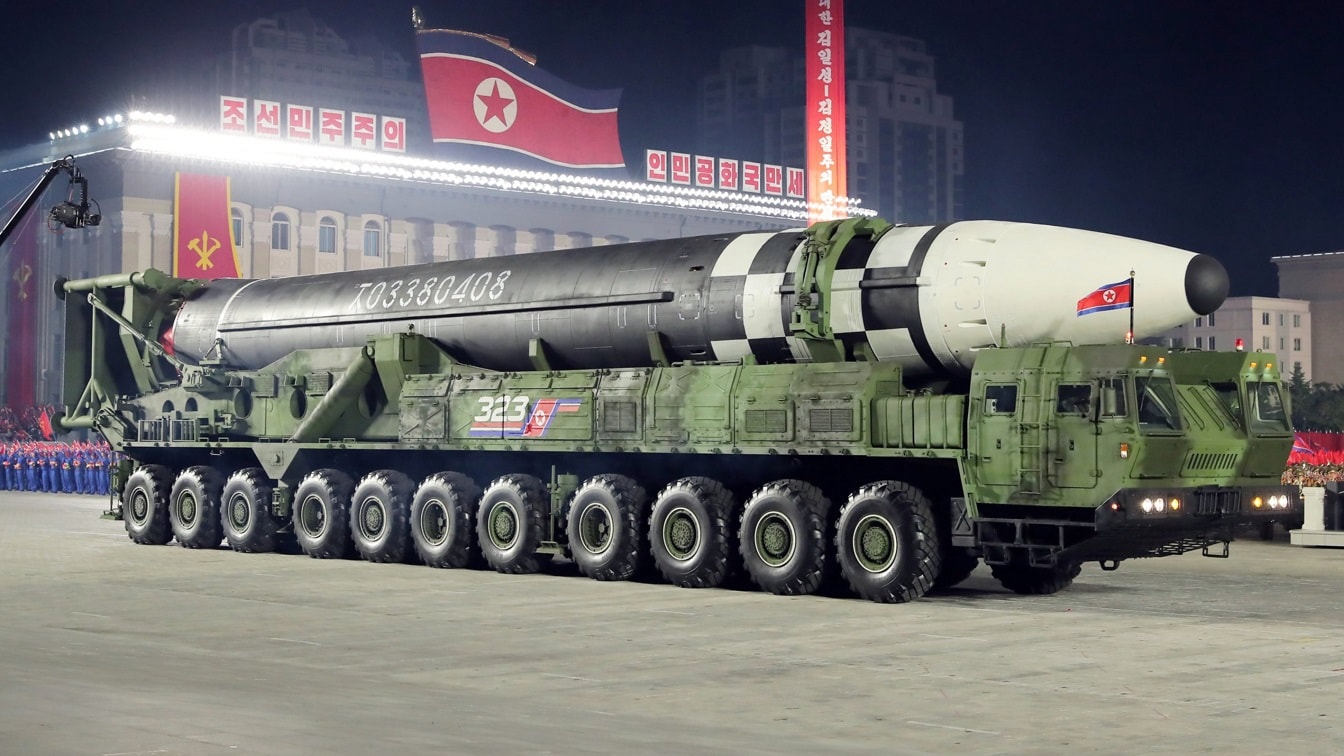On the night of April 25, North Korea staged a major military parade to commemorate the 90th anniversary of the founding of the Korean People’s Army (KPA). Unsurprisingly, the parade marked a total celebration of the country’s military might, from well-synchronized infantry formations to its strategic nuclear delivery systems. To commemorate the occasion, Kim Jong Un ditched his usual civilian garb to don epaulettes in his capacity as the marshal of the KPA.
North Korean military parades used to be somewhat of a novelty, but that appears to have changed in recent years. This parade marked the fourth in the last two years, coming on the heels of similar celebrations in October 2020, January 2021, and September 2021. In his first five years in power, Kim oversaw just three military parades. After declaring his nuclear deterrent “complete” in November 2017, Kim observed three more parades.
The intensification of the tempo of military parades also comes at a time when Kim has been open about North Korea’s internal difficulties: he openly lamented the failure of his economic agenda in October 2020, just ten months after North Korea declared the then-novel coronavirus “epidemic” in China a threat to its national survival.
But despite this apparent reckoning with the country’s economic difficulties, which include disappointing harvests and possible famine-line conditions in North Korea’s more remote regions, there’s no backing down from celebrating the self-reliant national defense industry. Not only has Kim held four military parades during this difficult time, but he has overseen a return to large-scale weapons testing and even an inaugural defense exposition in Pyongyang, which took place last October.
Internally, this emphasis on the national defense industry placates important stakeholders, including the military. Men like Jang Chang Ha, Jon Il Ho, Kim Jong Sik—North Korea’s well-known “missile men”—and, more importantly, Vice Marshal Pak Jong Chon have been granted tremendous prominence. At the defense exposition last year, these men were featured in massive photographs alongside Kim Jong Un himself.
For the North Korean people—particularly the civilians in Pyongyang who attend these parades—these repeated demonstrations of military might serve to emphasize that their sacrifices have not been for naught, as perverse as that may seem to outsiders who might see these displays as a sign of Kim’s disregard for his people’s welfare.
The big picture here is that North Korea is far from backing down from investing in its military and nuclear capabilities more broadly. The hardware shown at the parade was largely familiar, including the Hwasong-17 heavy intercontinental-range ballistic missile and new hypersonic weapons tested in the last several months. With the exception of a new solid-propellant missile that may be a new submarine-launched ballistic missile, there was little new in the way of hardware.
Several systems that were flight-tested for the first time since the last parade were included. A new maneuverable reentry vehicle-capable medium-range ballistic missile, first tested in January, was paraded. The parade also included the first appearance of the new short-range submarine-launched ballistic missile that was tested last October. Alongside these systems, North Korea also showed off the Hwasong-8 hypersonic glide vehicle, which was tested in September 2021.
The new solid-propellant missile is interesting since it is the third of its type to be shown at a parade without having seen any flight testing. North Korea previously paraded the Pukguksong-4 in October 2020 and the Pukguksong-5 in January 2021, but neither has been flight-tested. The newly paraded missile appears to be slightly longer, which would make it perhaps the longest-range solid-fuel missile known to exist in North Korea today. We should expect to see these missiles tested in due time. Kim has emphasized an interest in developing solid-fuel ICBMs as part of his ongoing 8th Party Congress modernization agenda.
Kim largely reiterated North Korea’s nuclear declaratory policy in a speech at the parade. “The fundamental mission of our nuclear forces is to deter a war,” Kim said, adding that “If any forces try to violate the fundamental interests of our state, our nuclear forces will have to decisively accomplish its unexpected second mission.”
This language is largely consistent with older North Korean declaratory statements concerning the role and possible use of nuclear weapons. North Korea has always reserved the right to use nuclear weapons first to blunt an invading force even as it asserts that it possesses nuclear weapons primarily to deter such an invasion in the first place.
The big picture here is that North Korea is keeping things crystal clear about its broader intentions: at any and all costs, it will sustain its military capabilities and nuclear deterrent. Parades like this one help convey that message both internally and externally.
Ankit Panda is the Stanton Senior Fellow in the Nuclear Policy Program at the Carnegie Endowment for International Peace. An expert on the Asia-Pacific region, his research interests range from nuclear strategy, arms control, missile defense, nonproliferation, emerging technologies, and U.S. extended deterrence. He is the author of Kim Jong Un and the Bomb: Survival and Deterrence in North Korea (Hurst Publishers/Oxford University Press, 2020).
A widely published writer, Panda’s work has appeared in the New York Times, the Washington Post, Foreign Affairs, Foreign Policy, the Bulletin of the Atomic Scientists, the Diplomat, the Atlantic, the New Republic, the South China Morning Post, War on the Rocks, Politico, and the National Interest. Panda has also published in scholarly journals, including Survival, the Washington Quarterly, and India Review, and has contributed to the IISS Asia-Pacific Regional Security Assessment and Strategic Survey. He is editor-at-large at the Diplomat, where he hosts the Asia Geopolitics podcast, and a contributing editor at War on the Rocks.

